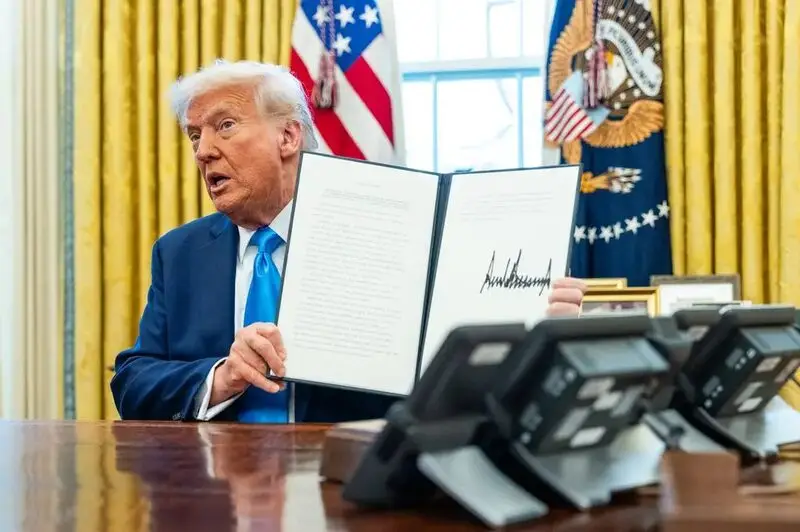With a trade war brewing with the BRICS alliance, the US dollar has fallen for the 3rd straight week amid the ongoing Trump tariffs. Indeed, the country is beginning to see the effects of the ongoing import taxes as the currency struggled to end the week yet again.
All eyes are on how the global economy will react to the increased global tensions. Friday saw US President Donald Trump restate his threat towards the economic alliance. This time, he warned of 150% tariffs, as he further claimed that the bloc “broke up” amid the warning.

Also Read: BRICS Make Major Announcement on US Dollar Amid Trump Tariffs
US Dollar Takes a Hit as Trump Tariff Hurts More Than Just BRICS
There have been growing concerns over US President Donald Trump’s economic policy. The aggressive nature of the plans has many worrying that it will only fast-track further de-dollarization. Indeed, what drove the nation to move away from the greenback, to begin with, was the weaponization of the global reserve asset. However, the current administration is seeking to do far worse than sanctions could.
Yet, it appears as though the continued threat of import taxes has begun to hinder the currency itself. Indeed, amid the BRICS opposition, the US dollar fell for the 3rd straight week amid the ongoing Trump tariffs, according to a Reuters report.

Also Read: BRICS Is Dead, Trump Declares: Is He Right?
The fading value of the greenback has had an adverse reaction to the fast start of Trump’s second campaign. Specifically, his return to the Oval Office and the US dollar’s performance under his watch “has been mostly bluster on tariffs,” the report notes.
This is not a new phenomenon either. The greenback had been “struggling for traction in the past few weeks.” Moreover, in February alone, it has dropped more than 1.8%. Currenlty, the global reserve asset, is headed for its largest monthly drop since September.
The driving factor looks to be the ongoing tariff threat warnings. Although they have yet to be actualized, they are certainly taking their toll. With the US economy stagnating over geopolitical tensions, there is little interest for investors to increase dollar holdings, driving the fall.






